News - GLOBE Observer
Tips for Events with GLOBE Eclipse
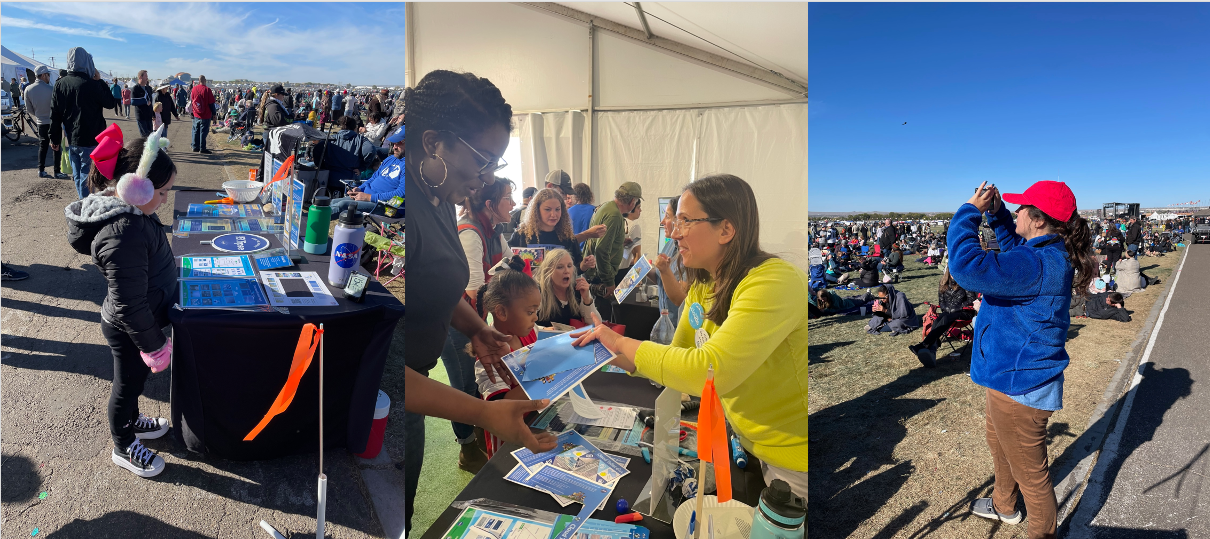
Are you planning an eclipse event on or before 8 April? GLOBE has a number of resources that can be useful as a display or interactive activity. These tips are gathered from the 2023 annular eclipse. If you have other ideas to share, please contact us, and we can add them to this page.
Displays or Presentations
GLOBE has provided a number of resources that work well for a tabletop or wall display. The printables for tabletop signs and the atmosphere one-pager both contain a QR code that will bring people to the GLOBE Observer app page. This feature was extremely popular during 2023 events. The GLOBE Eclipse toolkit includes the following and additional resources that you may find useful. All resources are available in Spanish on the toolkit page.
- GLOBE Eclipse tabletop signs
- GLOBE Eclipse Atmosphere One-Pager
- GLOBE Eclipse Overview One-Pager
- Guide on how to use the GLOBE Eclipse tool
- GLOBE Eclipse poster
- Elementary GLOBE Storybook: Do you know that clouds have names?
- GLOBE Eclipse graphic assets that you can customize
- NASA’s Solar Eclipse Map makes an excellent large poster for a selfie station or wall display.
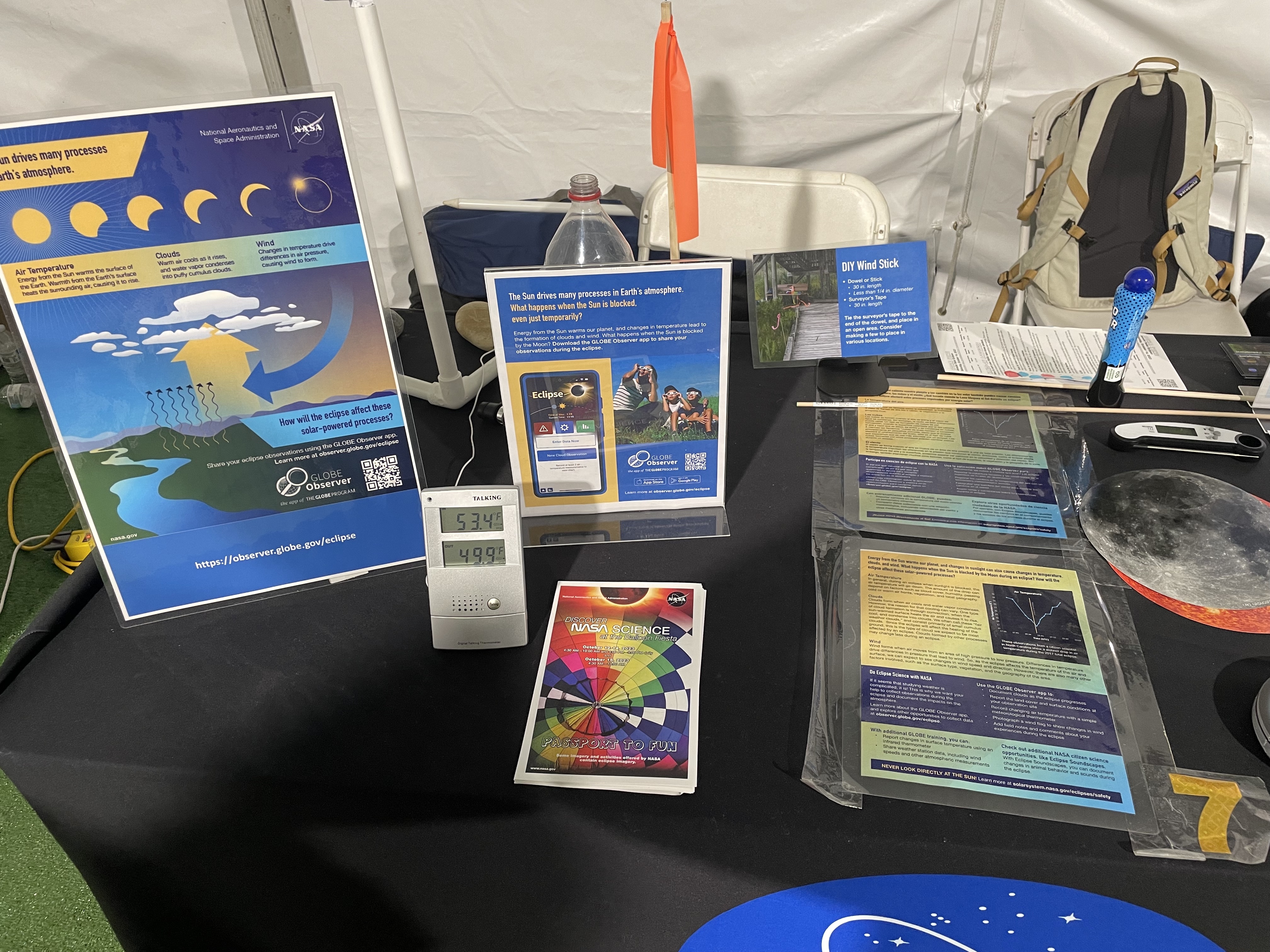
The GLOBE Eclipse atmosphere one-pager and table-top signs in both
English and Spanish are displayed during an eclipse event. The
display also includes a thermometer, solar viewing glasses, and Sun
and Moon cutouts used to explain an eclipse.
If you are giving a presentation or training a group how to do the GLOBE Eclipse protocol, we recommend our short video overview of the Eclipse protocol. For longer events, you are welcome to use or adapt the GLOBE Eclipse presentation, available as a pdf, Power Point, or Google Slides deck. NASA also provides eclipse training slides with additional eclipse science and safety information.
Activities
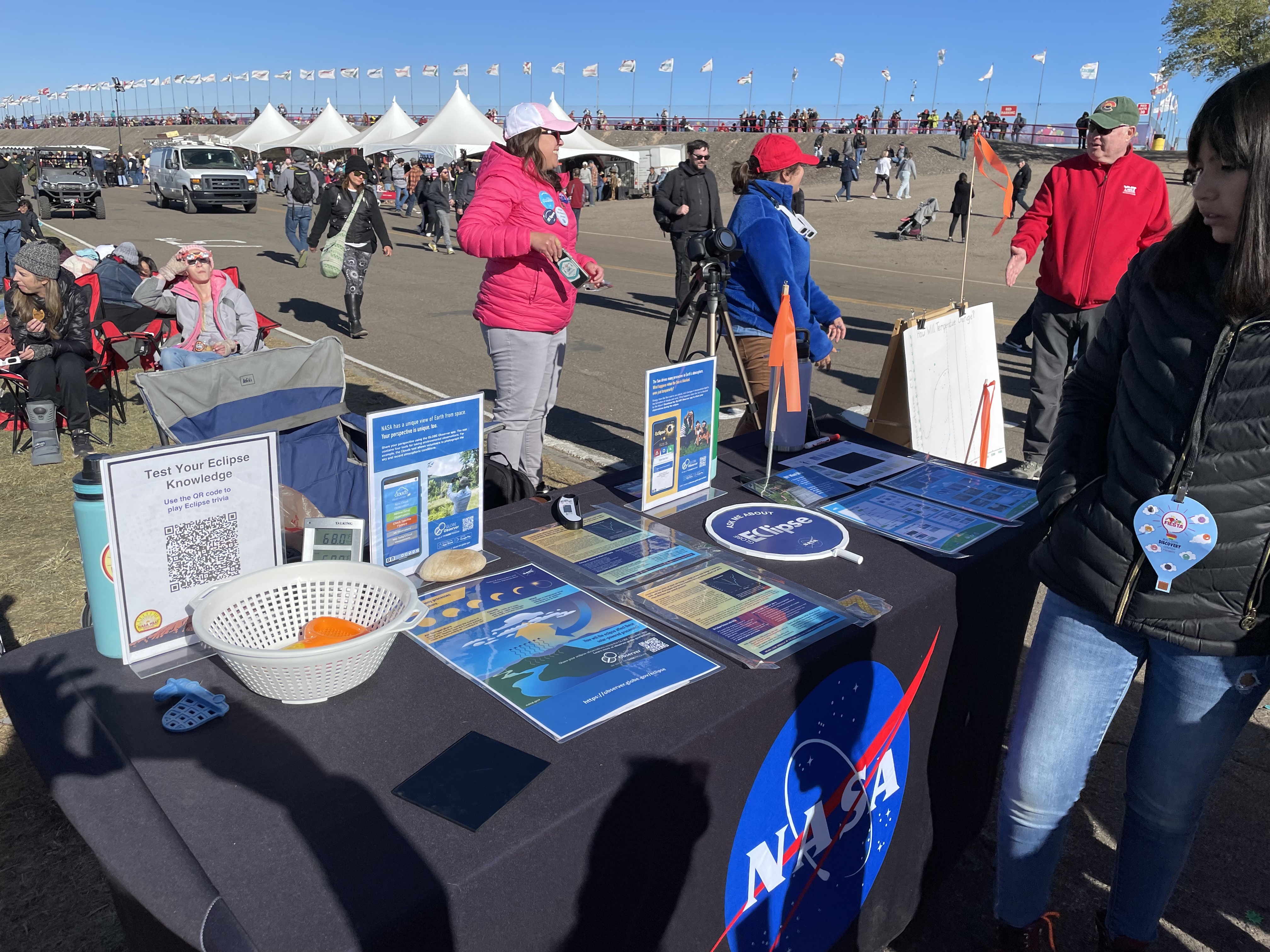
A tabletop display used during the October 2023 annular
eclipse included several objects that could be used interactively
for indirect viewing of eclipse shadows, thermometers, and a
temperature chart
.
Provide Safe Ways to View the Eclipse
It is never safe to look directly at the Sun without solar viewing glasses.If possible, provide solar viewing glasses or a filtered telescope so your guests can experience the eclipse. If you are in the path of totality, you should advise people to remove the glasses during totality when the Moon completely blocks the Sun.
Indirect viewing methods provide another way to see the eclipse. Any item with a small hole, like the GLOBE Eclipse Pinhole Postcard or even your interwoven fingers, will project an image of the eclipse. Stand with your back to the Sun and look at the shadow cast through the hole. It is helpful to have a smooth, solid-colored surface such as white posterboard to see the shadow clearly. If you provide objects (colanders, steam baskets or cooking implements with holes, beach toys, an index card and a hole punch, etc.) for indirect viewing, please demonstrate how to safely view the eclipse with them. During the 2023 eclipse, some guests thought that they could look at the Sun through the hole in the postcard instead of looking at the shadow on the ground.

Demonstrate how to safely view an eclipse indirectly by standing
with your back to the Sun and looking at the shape of shadows cast
through anything with well-spaced holes such as the GLOBE Eclipse
card, left, or a colander, right.
Display a few thermometers to track temperature

Be aware that the Bluetooth signal from the probe on a digital thermometer with a separate display may be tough to receive if you are in a large crowd. Facilitators reported interference even when the probe was close to the display unit during the 2023 eclipse. A simple alcohol thermometer works well as a backup.
Finally, people find infrared surface temperature thermometers extremely engaging, but these thermometers can’t be used for the GLOBE Observer Eclipse protocol, since they aren’t measuring air temperature. They may still be part of a facilitated activity during the eclipse. Many infrared thermometers use a laser pointer to help the user know what they are measuring. This poses a potential safety hazard. Make sure the laser isn’t pointed at anyone’s eyes. Turn off the laser or carefully monitor the thermometer’s use.
This activity works even if it is cloudy on the day of the eclipse or if you are not in totality.
Create a Temperature Chart
On the day of the eclipse, create a poster charting temperature every
10 minutes. You can ask volunteers to plot the temperature point, but
be prepared for uneven interpretation of where the point should go. If
you want a consistent curve, the facilitator should add the
points.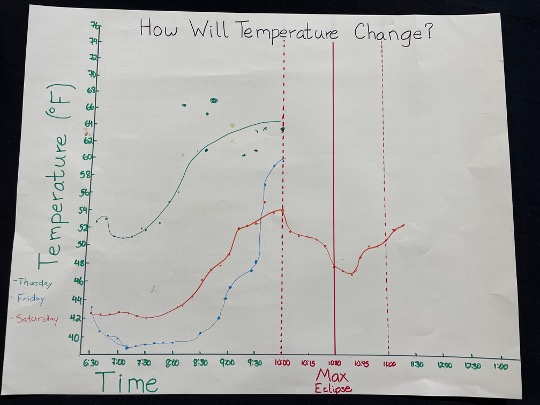
A chart showing temperatures in the days before and the day of the October 2023 annular eclipse. Temperature measurements stop at 10 am in this case because the event venue closed at that time, but ideally, all three days would cover the same time period. On the day of the eclipse, continue temperature observations for an hour after the eclipse if possible.
This activity is extremely engaging because it allows groups to see the temperature change real time during the eclipse. Most people won’t have a thermometer on them unless they are prepared ahead of time, but they notice the change and will want to return to see how much the temperature fell. This activity works even if it is cloudy on the day of the eclipse or if you are not in totality.
Demonstrate Convective Cloud Formation with Cloud in a Bottle
The cloud in a bottle demonstration (video at link) is extremely engaging for adults and children of all ages. This demonstration can be used at events before the eclipse, during the eclipse, or after the eclipse to explain how convective clouds form and why they might change during an eclipse.
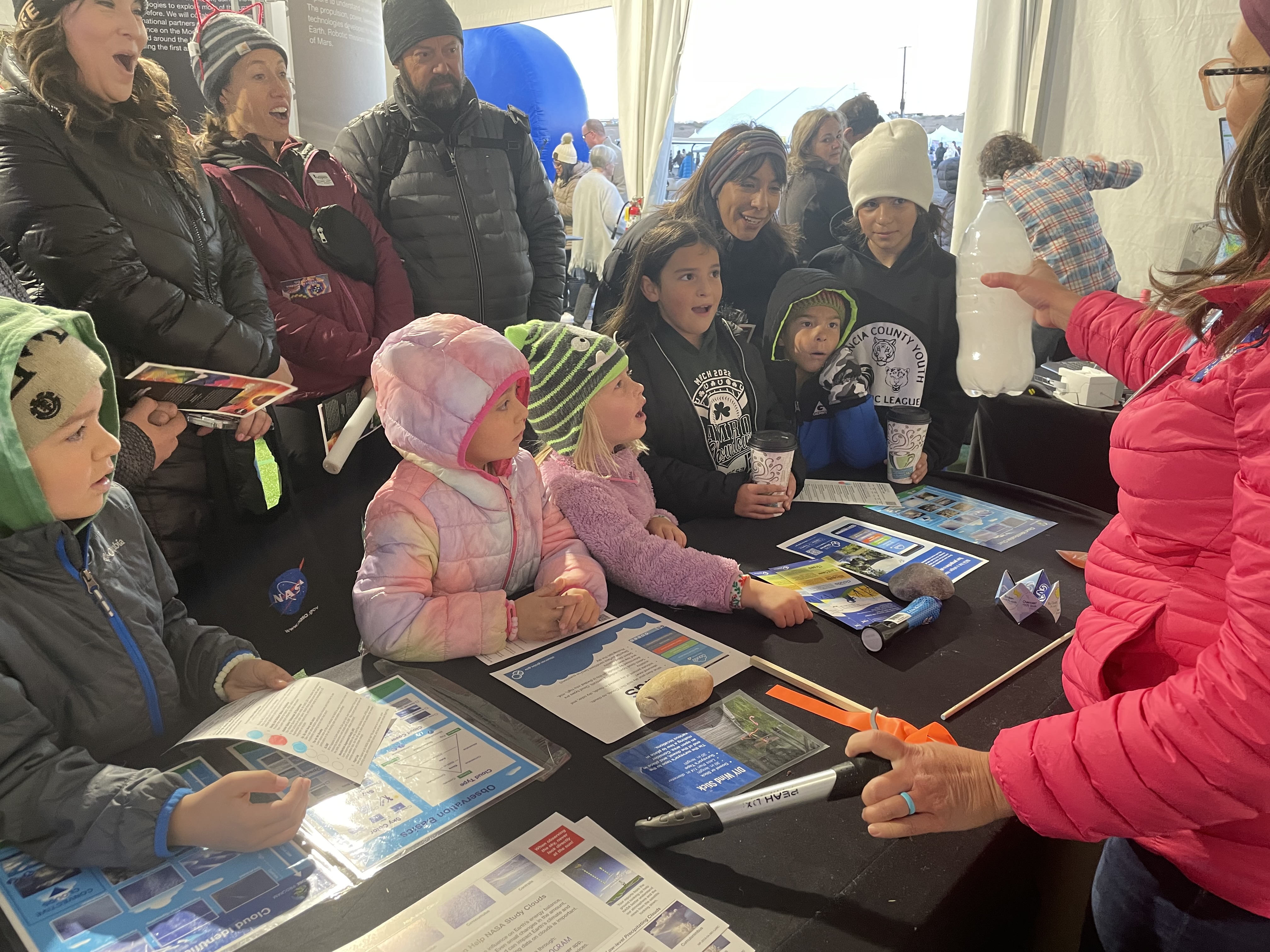
Adults and children are engaged by the cloud in a bottle demonstration.
To do the demonstration, pour a small amount of isopropyl alcohol into a plastic 1-2 liter bottle. Seal the bottle with a fizz keeper or cork with a ball pump inflation needle inserted through it. Shake the bottle to distribute the alcohol on the sides of the bottle, then add pressure to the bottle with the fizz keeper or a small pump via the inflation needle (you can ask a guest to help with this step). Ask guests to tell you when they can’t squeeze the bottle any more. Then, count down and release the seal. The release of air will make a loud pop (warn parents) and a cloud will instantly form.
As you pump air into the bottle, explain that the pressure is heating the air in the bottle, letting the liquid evaporate into a gas. Similarly, the Sun heats our atmosphere and Earth’s surface, evaporating water. When you release the pressure, the air expands quickly and cools. The gas in the air condenses into tiny droplets, which you see as a cloud in the bottle. In our atmosphere, water vapor cools rapidly as it rises, and the water condenses into droplets that gather on particles to form puffy clouds (convective clouds). When the Sun’s energy is no longer fueling this process (convection) during an eclipse, these clouds will flatten out or disappear.
The National Informal Education STEM Education Network provides how-to videos of the cloud in a bottle demonstration as well as a nice explanation of how clouds form.
Do the GLOBE Eclipse Protocol
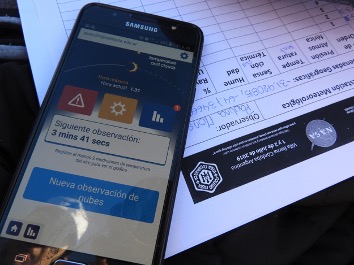
If doing GLOBE Eclipse with a group, a paper chart for recording temperature may be simpler than trying to enter the data into the app in real time. If you follow this data collection method, contact us to submit your data. Photo courtesy Pablo Cecchi.
Provide a Solar Eclipse Journal Handout
Hand out the solar eclipse journal to allow guests to record their solar eclipse experience. Encourage them to pay attention to animals, sounds, and shadows as well as to the weather. You may want to provide pencils.
General tips
Pause during totality to enjoy the eclipse. It is an awe-inspiring experience, and neither you nor your guests will want to do anything else during the maximum. The temperature will likely reach its lowest just after totality, so you won’t miss the low point if you take a break from monitoring the temperature during totality.
Stay late after the eclipse ends. Traffic after a large event is challenging. Providing opportunities for people to do something after the eclipse can help improve traffic flow since not everyone is leaving at the same time.
More importantly, people want to come back and share their experience with someone. They want to see how much the temperature changed, share what they noticed, and ask questions about what they experienced. Deep learning can occur during post-event reflection with a facilitator.
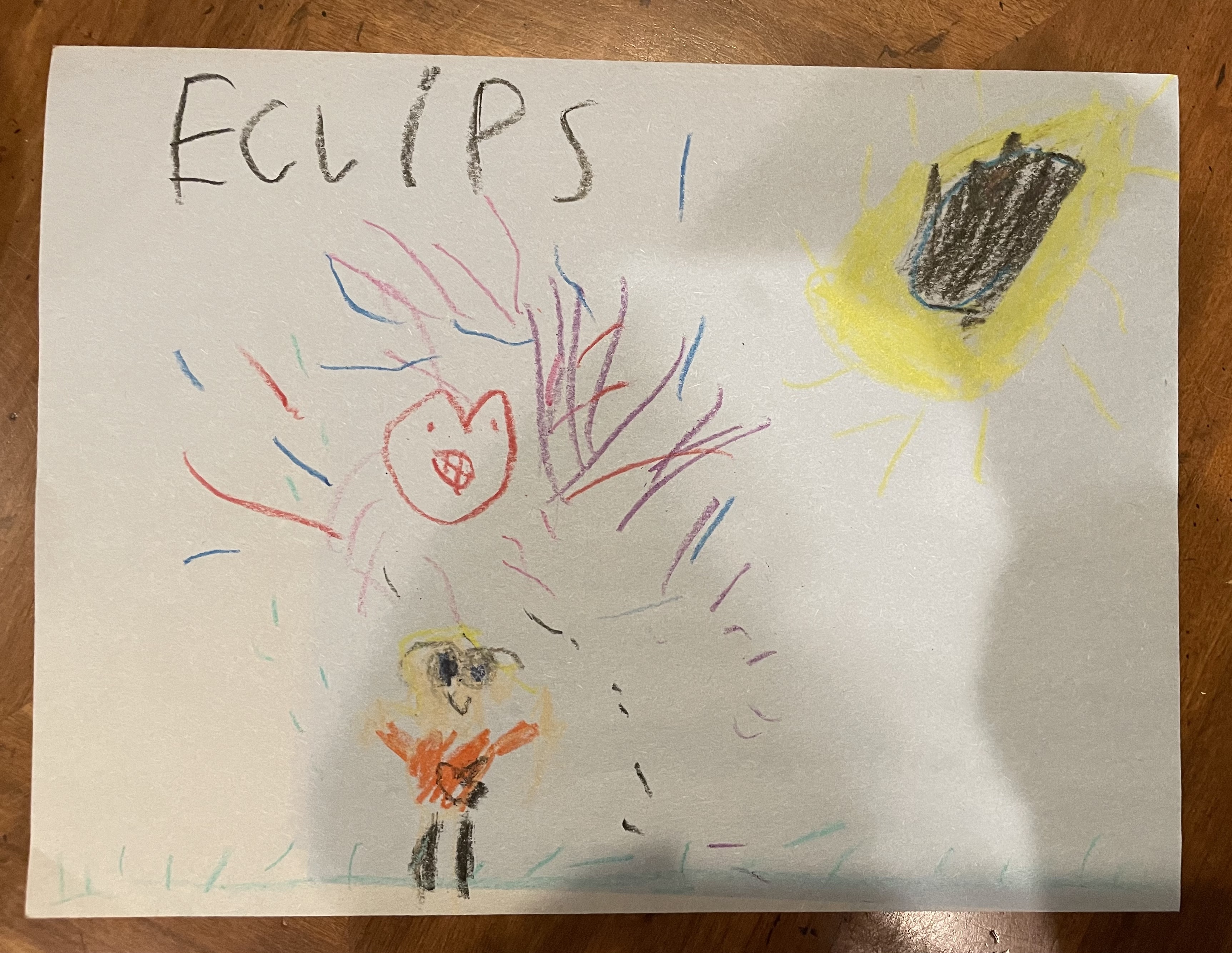
Provide ways for people to reflect on their eclipse experience,
even if it’s as simple as offering paper for journaling or space for
conversation. In this image, a child included a happy heart and
fireworks to reflect her emotions experiencing the annular eclipse.
Enjoy the eclipse, and if you use our resources, we’d love to hear how your event went! Contact us via our web form for help or to share feedback after your event.
Comments
View more GLOBE Observer news here.








